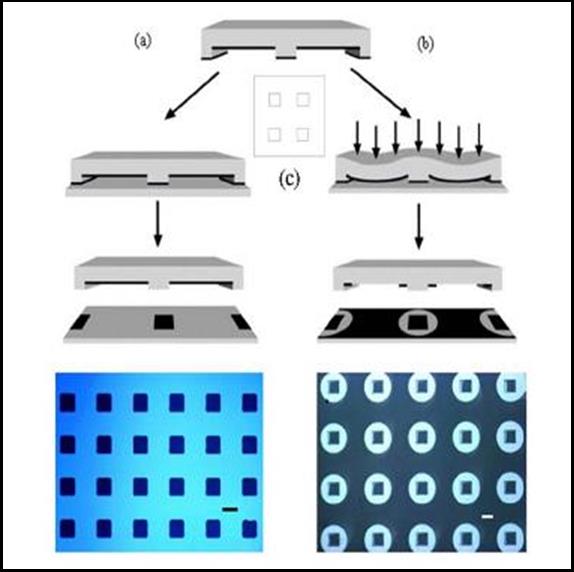|
· Soft lithography – Contact Printing with Stamp Deformation
Conventional photolithography has been employed until now as a method of The utilization of stamp deformation can not only replicate patterns on the stamp but also produce new patterns unavailable on the stamp. To produce new desired patterns, stamp dimension has to be designed in accordance with the theoretical calculations. Pitch size, height, distance as well as the applied pressure take critical rules in the performance of deformation. Multiple-step deformed contact printing results in smaller pattern size compared to the original feature size on stamp. Therefore, nanoscale patterns and structures are expected to be realized through the deformation. Despite the deformation, contact printing enables printing of patterned molecular monolayers on a large scale from square microns up to square millimeters without producing electrical shorts between the metallic contacts. This opens the possibility to characterize the electrical behavior of metal-molecule-metal junctions on a large ensemble, potentially used for practical applications such as data storage, chemical sensor, and biomaterial detection. |

|
Figure 3. Schematic illustration of contact printing with or without stamp deformation and corresponding optical micrographs of the resultant patterns [a: feature size; s: separation (center-to-center distance); h: feature height; scale bars: 50 mm]. (a) Contact printing simply leads to squares that replicate the stamp features without deformation. (b) Contact printing generates circular inverse patterns due to spontaneous stamp deformation. |
|
Research |
|
Teaching |
|
Publications |
|
Related links |
|
Home |
